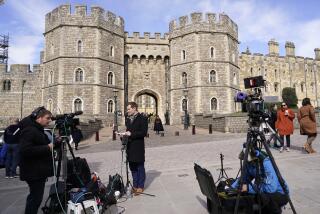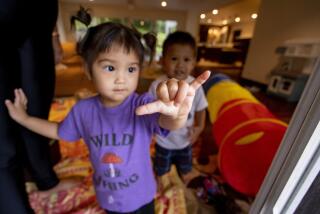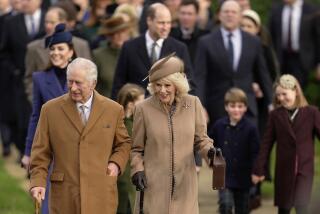See Hawaiian royal history in a five-stop procession
HONOLULU — Palace intrigue? Check. Royal rapscallions? Some. Kings and queens and gorgeous things? You’ll find those too.
You thought we were speaking of Britain, perhaps? Well, no, although Britain celebrated Queen Elizabeth II’s Diamond Jubilee in June. Instead, we’re turning to Hawaiian royalty, who ruled a kingdom now so popular that 7.3 million people visited last year.
Royal watchers will find almost as many twists and turns in the story of the Hawaiian monarchs as they do among England’s overlords. But this history is closer to home and perhaps strikes more fully at the heart. By knowing these kings and queens, you begin to understand the true majesty of Hawaii.
A quest for a refresher course recently brought me to Oahu. This isn’t the only island where the past pokes its head around many corners, but its concentration in Honolulu makes it easy to seek it out and soak it in. You can separate this five-stop royal route into appetizers or consume it as one large feast. Either way, you’ll find that even a tropical playground — and especially this one — can change a traveler’s perspective.
Bernice Pauahi Bishop Museum
Let the lessons — and the confusion — begin. Immediately inside the original part of the museum, whose exterior is almost Dickensian, the Kahili Room (feather standards borne like coats of arms in Europe) will introduce you to Hawaiian royalty, or alii, but the bloodlines may not be clear. (You can see a timeline of the monarchs who ruled the kingdom on LX.)
Sorting out who is related to whom is a chore, partly because monogamy wasn’t practiced until some time after the arrival of the missionaries about 1820 (Kamehameha I is said to have had 21 or more wives) and partly because of what the Hawaiians call hanai, in which children sometimes were given to relatives or others to raise. “It is not easy to explain its origin to those alien to our national life, but it seems perfectly natural to us,” Queen Liliuokalani wrote in her book “Hawaii’s Story by Hawaii’s Queen.”
You can get a feel for the chronology of the rulers in this room: Kamehameha I, a fighter and a diplomat who united the islands and died in 1819; Kamehameha II, who, with his wife, died of measles in 1824 while visiting King George IV in England; and Kamehameha III, who changed the government to a constitutional monarchy before his death in 1854.
Brothers Kamehameha IV (died in 1863) and Kamehameha V traveled extensively, including to the U.S., where the racial prejudice they encountered tainted their view of this country.
When Kamehameha V died in 1872 without an heir, Lunalilo was elected. The wildly popular monarch, the “People’s King,” died after 13 months in 1874, his ill health perhaps hastened by his taste for strong drink.
David Kalakaua was next, and during his reign was forced to accept a new constitution that depleted his powers. Upon his death in 1891, his sister, Liliuokalani, took the throne and lasted about two years before she was overthrown. She was tried for treason, convicted and sentenced to five years at hard labor, a sentence later commuted.
It is hard now to imagine, in a place as joyful as Hawaii, the sorrow of watching the kingdom wrested away from its rightful rulers. Was it a power grab by foreign business interests or an altruistic intervention by foreigners? A morning or afternoon at the Bishop can be your own fact-finding mission, and whatever your conclusion, you’ll never look at Hawaii the same.
Bernice Pauahi Bishop Museum, 1525 Bernice St., Honolulu; (808) 847-3511, https://www.bishopmuseum.org. Open 9 a.m.-5 p.m. daily except Tuesdays. Admission: $17.95 adults, $14.95 seniors 65 and older and children 4-12; children 3 and younger are admitted free.
Iolani Palace
On the grounds of Iolani Palace is a sacred mound where Hawaiian royalty once were buried. “Kapu” — forbidden — a sign warns.
The palace, which served the last two monarchs, is more welcoming. Once you don the booties that keep your shoes from scratching the Douglas fir floors, you’ll immediately notice the royal portraits lining the wall, providing a sort of Cliffs Notes review of the monarchy.
It’s easy, however, to be diverted from those portraits by the entry’s real showpiece: the gleaming koa wood staircase, said to be the largest such structure in the world. (The palace was closed for renovations for almost a decade starting in 1969; the work included tenting the building because termites had feasted on various parts of the palace. But the staircase was fine, said Kippen de Alba Chu, the palace executive director, because koa is so durable.)
This is the palace, completed in 1882, from which King David Kalakaua and his wife, Queen Kapiolani, and, later, Queen Liliuokalani, reigned.
In 1883, a coronation ceremony was held in the new palace, though it was slightly after the fact: Kalakaua had reigned since 1874. No matter. The European-influenced palace became the heart of parties and functions.
It was such a symbol that when the Hawaiian monarchy was overthrown in 1893, the new provisional government couldn’t get rid of the palace contents fast enough. (One plate, belonging to a royal place setting, which you can see on the sumptuously set dining room in the palace, was bought for 25 cents at a flea market in San Diego and returned; other pieces came home in a similar way.) Many of the furnishings are replacement pieces.
But not the thrones. In a room resplendent with crimson and gold, two thrones stand side by side. They are originals, and they are unrestored. “They’re identical,” Chu said, “so we’re not 100% sure which was the king’s and which was the queen’s.” This room invites you to linger and ponder how the monarchy unraveled in a place of such innovation: electricity before the White House had it; telephones; indoor plumbing; dumbwaiters. It had everything but a fairy-tale ending.
Iolani Palace, 364 S. King St., Honolulu; (808) 538-1471 (for recorded information), https://www.iolanipalace.org. Guided tours (reservations required [808] 522-0832) $20 for adults, $6 for children 5-12; self-led and audio tours $13 and $5, respectively.
Washington Place
“It is a large, square, white house, with pillars and porticos on all sides, really a palatial dwelling, as comfortable in its appointments as it is inviting in its aspect,” Queen Liliuokalani wrote of Washington Place in her book, “Hawaii’s Story by Hawaii’s Queen.”
Before and after Liliuokalani’s ascension to the throne in 1891, Washington Place was her home. The elegant Greek Revival dwelling was owned by Capt. John Dominis, a seaman, and his wife, Mary. It was completed in 1847, a year after Dominis was said to have been lost at sea.
Their son, John, attended the Chiefs’ Children’s School, or the Royal School, established by missionaries for children of royal blood. (Absent any royal blood, Dominis’ admission remains something of a mystery.) It was there that he met a student named Lydia Kamakaeha, who would become his wife — and the last reigning monarch. Washington Place was her home more for more than a half-century.
Given the Hawaiian history, Washington Place may seem an odd choice for a name, but it was so decreed for perpetuity by Kamehameha III and so it has remained. Today, the home, which is open for tours by appointment, is “decorated very much like it was during the queen’s time,” said Corinne Chun Fujimoto, the curator of Washington Place. “That’s what we are trying to do: bring the house back to the time of the queen and bring her music back.” Her music, of course, included “Aloha Oe,” or “Farewell to Thee,” one of scores of pieces she wrote.
In Washington Place, a grand piano sits as though ready for the queen herself, a tall kahili in the background. Besides the piano, she played organ, guitar and autoharp, thanks to her musical training at the Royal School. “She understands it’s the culture that will take her people to the future,” Chun Fujimoto said.
Of this home, the queen wrote in her memoir: “It is, in fact, just what it appears, a choice tropical retreat in the midst of the chief city of the Hawaiian Islands.” That is as true now as it was then, and definitely worth the time to get to know the home of the only reigning Hawaiian queen, who loved children but had none of her own and who loved her kingdom but stepped aside to spare her people a full-bore war.
Washington Place, 320 S. Beretania St., Honolulu; (808) 586-0240, https://www.lat.ms/RkiuIk. Appointment required; email Cameron.Heen@hawaii.gov. No cost but donation for preservation accepted.
Queen Emma Summer Palace
If you look today at the Queen Emma Summer Palace, you see a graceful home set against the lush backdrop of Nuuanu Valley. If things had turned out differently, you might be watching a baseball game being played here instead of seeing how history played out.
Like many structures, this one had fallen into disrepair and was slated, along with its 65 acres, to become a ball field until the Daughters of Hawaii intervened in 1915 and turned it into a showpiece.
The palace, about three miles from downtown, is filled with beautiful artifacts, some original to the abode that Queen Emma and her husband, King Kamehameha IV (who became king after his predecessor’s death in 1854) used as an escape from Honolulu’s heat. You’ll see a koa bed that has its own safe-deposit boxes, of a sort, built into it; a Chinese porcelain bathtub; and a necklace that was a gift from the maharajah of India.
But none is as compelling as the cradle in which the king and queen’s son, Prince Albert, slept. The koa wood piece, crafted by German woodworker Wilhelm Fischer, resembles a half an egg, as though a protection against the dangers of childhood.
Ravaged by disease and perhaps a weakened gene pool, the number of Hawaiians dwindled rapidly after missionaries arrived about 1820. In the 1830s, there were 124,000 Hawaiians; by the 1880s, only 44,000 remained. Prince Albert’s birth was reason enough for joy, and his survival past his first birthday gave the kingdom hope for the future of the monarchy.
If you’re a student of this history now, you know that the next Kamehameha was a brother, not a son. The young boy in whom the people had placed their hope died in 1862. He was 4 years old. His father, grief-stricken, died 15 months later. After their deaths, Queen Emma was given the nickname Kaleleonalani, “flight of the heavenly ones.”
Queen Emma Summer Palace, 2913 Pali Highway, Honolulu; (808) 595-3167, https://www.daughtersofhawaii.org. Open 9 a.m.-4 p.m. daily, except holidays. Docent-guided tours $10 for adults, $8 for seniors (62 and older), $1 for children (younger than 18); self-guided tours are $8 for adults, $6 for seniors and $1 for children.
Mauna Ala
After Albert’s death, Kamehameha IV ordered a new mausoleum built to house his son. Mauna Ala (“fragrant mountain”), the Royal Mausoleum, is not far from the Summer Palace.
“These grounds were special to the Hawaiian people, especially the Kamehameha family,” said Kainoa Daines of the Oahu Visitors Bureau, an active member of the Royal Order of Kamehameha I, responsible for ceremonial protocols. “It was at this very spot … where Kamehameha’s army met Kalanikupule’s army [in 1705], and blood was shed for the first time. It was a pivotal place, a very pivotal battle in the unification of the islands.”
The bodies of other royals, who were in the burial mound at Iolani, were moved here in 1865. “From 9 p.m. until 2 a.m. the commoners were told to stay inside their house” because they didn’t have the rank — the mana — to witness the procession, Daines said. To muffle the sounds of beasts and the wagons they pulled, the streets were lined with pili grass (often used in thatch work), and all of the caskets were moved into what was then the mausoleum and what is now the chapel.
Soon the mausoleum wasn’t large enough, so one crypt was built for the Kamehamehas (except Kamehameha I, whose body was hidden) and one for the Kalakauas. (Lunalilo also is not here; he’s buried at Kawaiahao Church in downtown Honolulu.)
Mauna Ala is a who’s who of Hawaiian royalty, and it was humbling to stand before them. Daines chanted and placed leis at the Kalakaua and Kamehameha crypts. A light rain fell as he bent to put the flowers on the pink granite monument that marks the tomb of the Kamehamehas.
Making sure to face the tomb, he stepped backward, saying softly, “It’s for all of us.”
Mauna Ala Royal Mausoleum, 2261 Nuuanu Ave., Honolulu; https://www.lat.ms/WqNvvC. Open 8 a.m.-4 p.m. Mondays-Fridays. Admission is free.
More to Read
Sign up for The Wild
We’ll help you find the best places to hike, bike and run, as well as the perfect silent spots for meditation and yoga.
You may occasionally receive promotional content from the Los Angeles Times.







